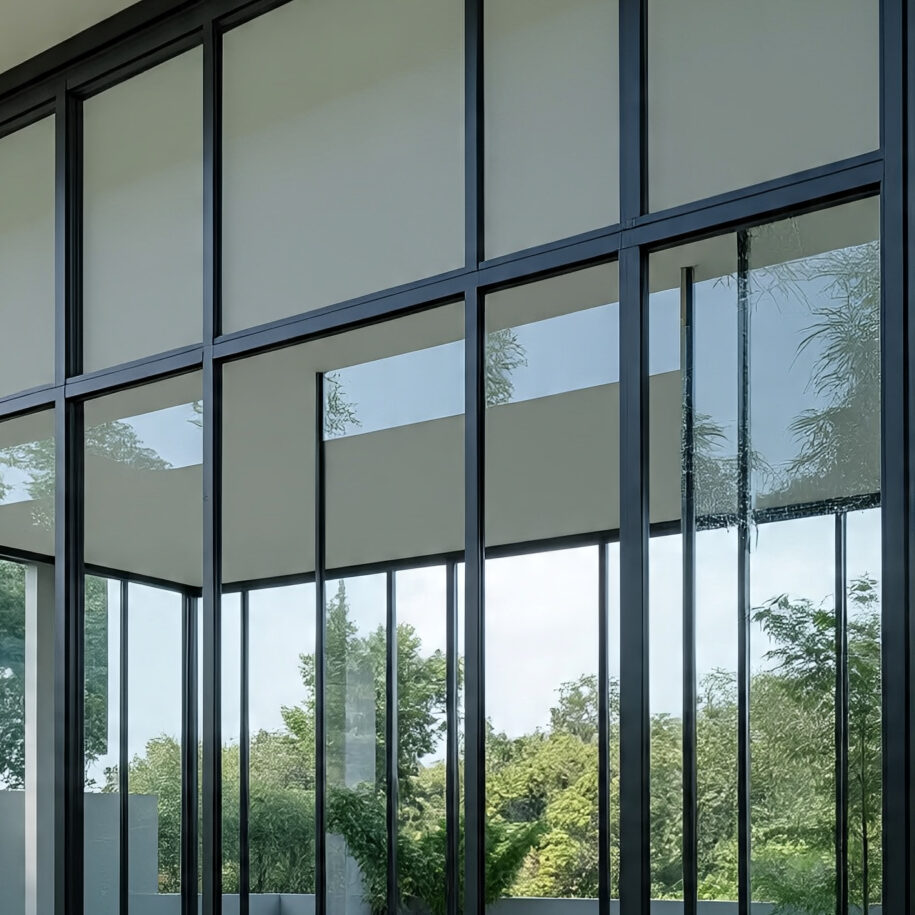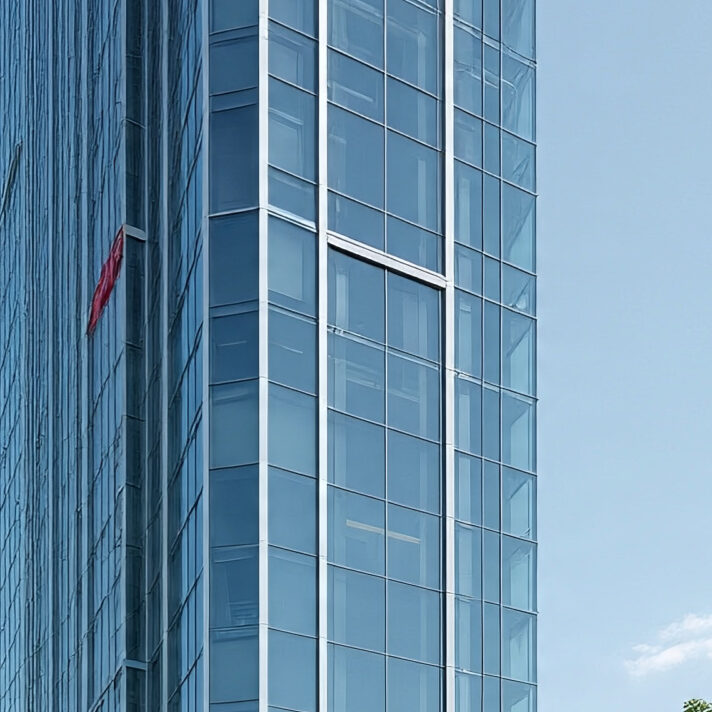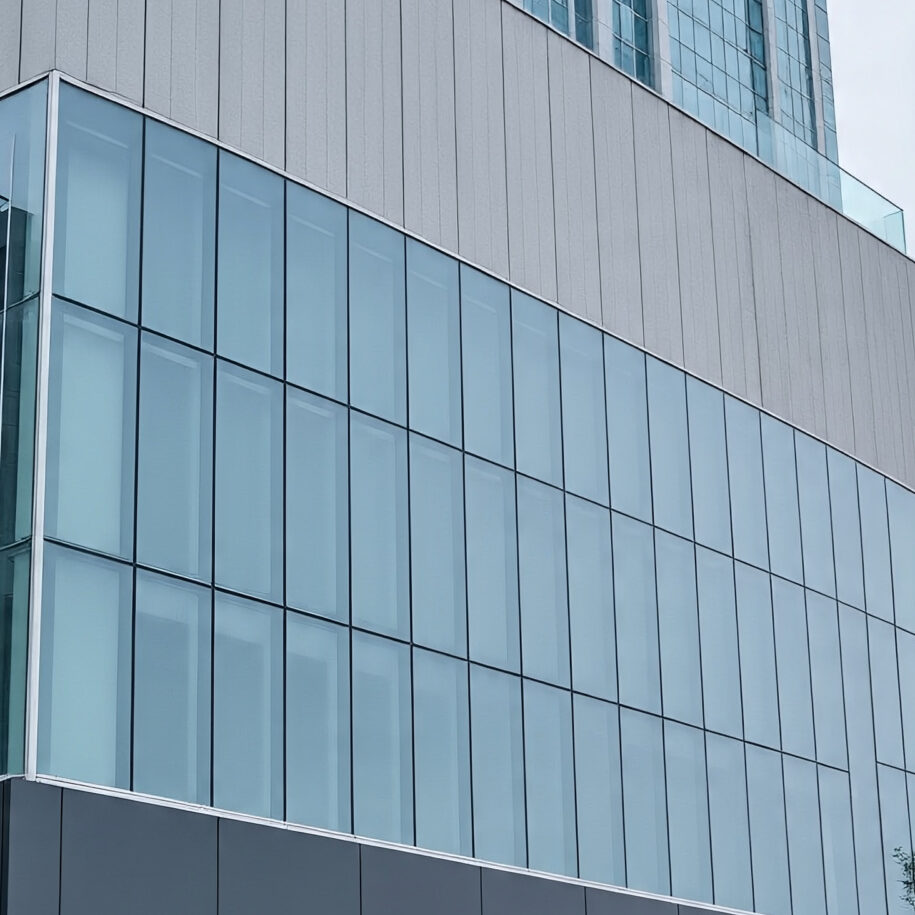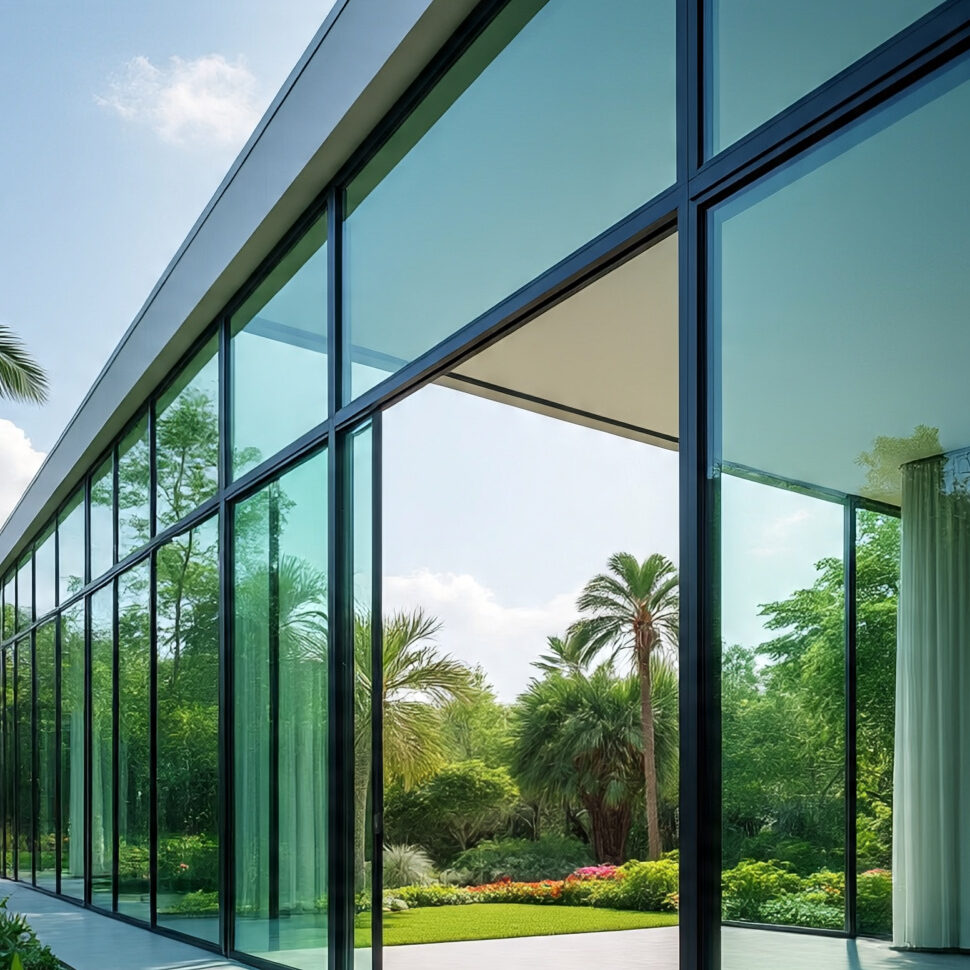![]()

Curtain wall systems and structural glazing are pivotal in modern architecture, offering aesthetic appeal, natural light, and energy efficiency. In Eastern India, where humid subtropical climates dominate, designing these systems requires careful consideration of environmental factors like high humidity, heavy rainfall, and temperature fluctuations. Cities such as Kolkata, Guwahati, Bhubaneswar, Patna, and Ranchi face unique challenges that demand tailored solutions for curtain wall and structural glazing systems. This blog explores the technical aspects of designing these systems for humid climates, incorporating calculations to ensure performance and durability, while optimizing for SEO to enhance visibility for Intext India’s WordPress website.
Understanding Humid Climates in Eastern India
Eastern India experiences a humid subtropical climate with distinct wet and dry seasons. Key characteristics include:
- High Humidity: Relative humidity often exceeds 80% in cities like Kolkata and Guwahati, especially during monsoons (June–September).
- Heavy Rainfall: Annual rainfall ranges from 1,200 mm in Patna to over 2,500 mm in Guwahati, increasing risks of water infiltration.
- Temperature Variations: Summer temperatures in Bhubaneswar can reach 38°C, while winters in Ranchi dip to 10°C, affecting thermal performance.
- Wind Loads: Coastal cities like Kolkata face high wind speeds (up to 50 m/s during cyclones), necessitating robust structural design.
These conditions challenge curtain wall systems, which must resist water penetration, manage thermal loads, and ensure structural stability. Structural glazing, with its seamless glass appearance, adds complexity due to its reliance on silicone sealants and minimal framing.

Key Considerations for Curtain Wall and Structural Glazing Design
1. Material Selection for Humidity and Corrosion Resistance
In humid climates, materials must withstand moisture-induced corrosion and degradation. Aluminum, commonly used in curtain wall frames, is lightweight and corrosion-resistant when anodized or powder-coated. For structural glazing, high-performance silicone sealants are critical for bonding glass to frames without visible supports.
- Aluminum Frames: Use 6063-T6 aluminum alloy with a minimum anodizing thickness of 25 microns or powder coating of 60–80 microns to prevent corrosion in humid environments like Bhubaneswar.
- Glass Types: Double-glazed low-emissivity (Low-E) glass or solar control glass is ideal. For example, a double-glazed unit with a U-value of 1.6 W/m²K and Solar Heat Gain Coefficient (SHGC) of 0.25 reduces cooling loads in Kolkata’s hot summers.
- Silicone Sealants: Structural glazing requires high-modulus silicone with tensile strength >1.0 MPa and elongation >100% to handle thermal expansion and wind loads.
Calculation Example: To estimate thermal expansion in aluminum mullions in Patna (temperature range: 10°C to 38°C):
- Coefficient of thermal expansion for aluminum = 23.6 × 10⁻⁶/°C
- Mullion length = 3 m
- Temperature difference = 38°C – 10°C = 28°C
- Expansion = 23.6 × 10⁻⁶ × 3 × 28 = 0.00198 m = 1.98 mm
Design joints must accommodate this 1.98 mm expansion to prevent stress on glass panels or sealant failure.
2. Waterproofing and Drainage Systems
High rainfall in Guwahati and Bhubaneswar demands robust waterproofing. Curtain walls should employ pressure-equalized rainscreen systems to balance air pressure and prevent water ingress. Structural glazing systems, which rely on silicone sealants, must ensure perfect adhesion to avoid leaks.
- Rainscreen Principle: The glazing rebate is ventilated to equalize pressure, reducing water penetration. Use gaskets with a minimum compression set of 20% for durability.
- Drainage Channels: Incorporate sloped drainage channels with a minimum 1:50 gradient to direct water away from joints.
- Sealant Application: For structural glazing, apply a continuous 13 mm wide silicone bead with a minimum glass contact width to ensure a watertight seal, as per ASCE 7-16 standards.
Calculation Example: For a curtain wall in Kolkata with a wind-driven rain load of 1,000 Pa:
- Required sealant shear strength = 0.15 MPa (typical for high-modulus silicone)
- Joint width = 10 mm
- Shear stress = Pressure / Joint width = 1,000 / (10 × 10⁻³) = 100,000 Pa = 0.1 MPa
Since 0.1 MPa < 0.15 MPa, the sealant is adequate for the load.

3. Thermal Performance and Energy Efficiency
Humid climates increase cooling demands, especially in commercial buildings in cities like Ranchi. Curtain walls and structural glazing must minimize solar heat gain and heat transfer.
- Low-E Glass: A Low-E coating with SHGC of 0.25 reduces solar heat gain by 20–30% compared to clear glass, lowering cooling costs in Bhubaneswar’s office buildings.
- Thermal Breaks: Use polyamide thermal breaks in aluminum frames to reduce U-value by 30%, improving insulation in Patna’s variable climate.
- Double Glazing: A double-glazed unit with a 12 mm air gap and argon fill achieves a U-value of 1.4 W/m²K, compared to 5.8 W/m²K for single glazing.
Calculation Example: Cooling load reduction in a Kolkata office building using Low-E double glazing:
- Building area = 1,000 m², glazed area = 30% (300 m²)
- SHGC of clear glass = 0.7, SHGC of Low-E glass = 0.25
- Solar radiation = 700 W/m² (average for Kolkata)
- Cooling load (clear glass) = 300 × 0.7 × 700 = 147,000 W = 147 kW
- Cooling load (Low-E glass) = 300 × 0.25 × 700 = 52,500 W = 52.5 kW
- Reduction = 147 – 52.5 = 94.5 kW, or ~64% savings
This translates to significant energy cost savings, critical for LEED-certified projects.
4. Structural Design for Wind and Seismic Loads
Eastern India’s coastal cities like Kolkata face high wind loads, while inland cities like Ranchi experience moderate seismic activity (Zone III). Curtain walls and structural glazing must be designed to transfer loads to the building structure.
- Wind Load Design: For a 50 m/s wind speed in Kolkata, calculate wind pressure using IS 875 (Part 3):
- Wind pressure = 0.6 × V² = 0.6 × 50² = 1,500 Pa
- For a 3 m × 1.5 m glass panel, force = 1,500 × (3 × 1.5) = 6,750 N
- Mullion deflection limit = L/175 = 3,000 / 175 = 17.14 mm
- Select a mullion with a moment of inertia (I) to limit deflection, using I = (5 × w × L⁴) / (384 × E × Δ), where E = 70 GPa for aluminum.
- Seismic Considerations: Use laminated glass with a 0.76 mm interlayer for safety in Ranchi, ensuring fragments remain bonded during earthquakes.
5. Structural Glazing Specifics
Structural glazing, with its frameless appearance, is popular in modern Eastern Indian projects, such as corporate offices in Kolkata’s Salt Lake City. Key considerations include:
- Silicone Bonding: Use structural silicone with a minimum tensile strength of 1.0 MPa to bond glass to aluminum or steel supports.
- Glass Thickness: For a 3 m × 1.5 m panel under 1,500 Pa wind load, calculate minimum thickness using ASTM E1300:
- Stress = (q × a²) / (t²), where q = wind pressure, a = panel dimension, t = thickness
- For 6 mm tempered glass, stress is within allowable limits (50 MPa).
- Minimal Framing: Use glass fins or stainless steel rods for support, reducing visual obstructions in Guwahati’s high-rise designs.
Case Study: Optimizing a Curtain Wall in Bhubaneswar
Consider a 10-story office building in Bhubaneswar with a 50% window-to-wall ratio (WWR). The design uses a unitized curtain wall system with structural glazing elements.
- Glazing Choice: Double-glazed Low-E glass (U = 1.6 W/m²K, SHGC = 0.25)
- Frame: 6063-T6 aluminum with polyamide thermal breaks
- Sealant: High-modulus silicone with 0.15 MPa shear strength
- Energy Savings: Using the cooling load calculation above, a 50% WWR with Low-E glass reduces cooling load by 60% compared to clear glass.
- Cost-Benefit Analysis: Initial cost for Low-E glazing is 20% higher, but energy savings yield a payback period of ~5 years, based on Bhubaneswar’s electricity rates.
Best Practices for Eastern Indian Projects
- Site-Specific Climate Data: Use 10-year weather data from the India Meteorological Department (IMD), Pune, for accurate simulations in cities like Patna.
- BIM Integration: Employ Building Information Modeling (BIM) to optimize curtain wall designs, ensuring compatibility with structural glazing components.
- Local Compliance: Adhere to IS 875 (wind loads) and IS 1893 (seismic loads) for safe designs in Kolkata and Ranchi.
- Maintenance Planning: Schedule regular inspections for silicone sealants in structural glazing to prevent degradation in Guwahati’s humid conditions.
Conclusion
Designing curtain wall and structural glazing systems for Eastern India’s humid climates requires a balance of aesthetics, energy efficiency, and structural integrity. By selecting corrosion-resistant materials, optimizing thermal performance, and ensuring robust waterproofing, architects can create durable and sustainable facades for cities like Kolkata, Guwahati, Bhubaneswar, Patna, and Ranchi. Technical calculations, such as those for thermal expansion, wind loads, and cooling load reductions, ensure precision and performance. Intext India’s expertise in high-performance glazing solutions can help architects and builders achieve these goals, enhancing both project quality and SEO visibility for modern architectural solutions.
For more insights on curtain wall and structural glazing systems, visit Intext India or contact our team for tailored solutions in Eastern India’s challenging climates.

Leave a Reply